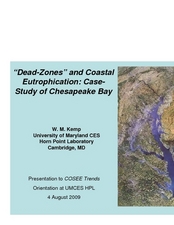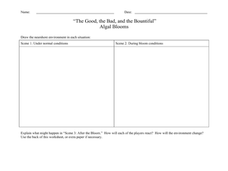Curated OER
"Dead-Zones" and Coastal Eutrophication: Case-Study of Chesapeake Bay
Take an in-depth look at nutrient loading, eutrophication, and hypoxia using data on The Chesapeake Bay as an example. This comprehensive presentation includes detailed graphs, photos, and details about the changes in marine organism...
Curated OER
AP: Chapter 54: Ecosystems
A lot of learning is packed into these 23 questions about ecosystems. Advanced biology classes apply their knowledge of communities, productivity, biogeochemical cycles, and human impact on the environment by writing short answers for...
Curated OER
The Influence of Human Activity on the Environment
The surge in human population in the last 2,000 years, due in large part to better health care, has brought a surge in the demand for resources and in pollution. The graphics, photographs, and real-life examples in a thought-provoking...
Curated OER
Ecology and the Biosphere
Ecology enthusiasts explore ecosystems with this worksheet. They define vocabulary terms and write out answers to questions about distribution and abundance of life. They complete a chart comparing abiotic and biotic factors of Earth's...
Curated OER
"The Good, The Bad, and the Bountiful" Algal Blooms
In this biology learning exercise, students draw 2 illustrations of the nearshore environment before and during algal blooms. They explain what happens after the bloom is over.
Curated OER
The Biogeochemical Cycles
The majority of this presentation is a collection of diagrams and graphs that back your lecture on biogeochemical cycles. The last few slides define ecosystems and the Gaia hypothesis. You may find these slides valuable, but will...
Curated OER
Environmental Issues And Energy Alternatives Crossword
For this environmental issues worksheet, students solve 16 clues focusing on the forms of renewable and non-renewable energy, global warming and acid rain.
Other popular searches
- Eutrophication Worksheets
- Eutrophication Experiments
- Eutrophication Unit Plans
- Lesson Plans Eutrophication
- Artificial Eutrophication
- Cultural Eutrophication






